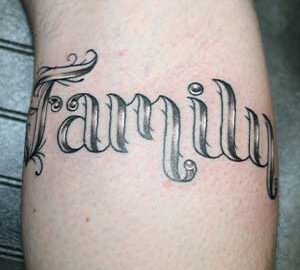The best method is to pull out 20% more ink caps than required
for the job, and pour 100% more ink than is required for the job.
This way you should never have to go into the cold zone while
you are in the middle of a tattoo. Remember that ink is not expensive
and neither are ink caps. It is far better to waste a few
pennies by tossing out some un-used inks and caps, than it is to
risk a clean bottle of ink in your warm zone.
Under no circumstance is the artist to refill an ink cap that is
considered to be a hot zone item.
Under no circumstance is the artist to touch the cold zone with
hot gloves once the hot zone has become established.
At no time is the artist permitted to leave the work area until the
hot zone is completely removed by disposing of all hot zone
items into appropriate receptacles.
The client is considered to be a hot zone until his tattoo is properly
bandaged. This means that the artist must also have the
appropriate bandaging materials out prior to activating the hot
zone.
It may seem overwhelming, but zone setup takes practice and
getting used to. All studios and work areas will be setup differently,
and have their own little unique qualities. The zone definition
will never change; no matter how the work area is setup.
Remember that after a tattoo is complete and if you are using
non-disposable tubes and tips; the tubes and tips are still con56
sidered hot zone until they are sterilized. The studio must establish
a policy that is known by all artists that instructs them as to
the manner in which hot materials are transported from the work
area to the cleaning area of the studio.
Setup your work area – tips
feel free to drop us a line support@TeachMeToTattoo.com
-
DC current required
, Uncategorized, current, dc, electricity, power, tuning, voltage, 2
Tattoo machines require DC or direct current. Direct current is the unidirectional flow of current. This is opposite the...
-
The Dime Gap
, Uncategorized, dime, liner, nickle, shader, tuning, 0
Often times you will hear an artist talk about the importance of the dime gap. There is some debate...
-
Video Tutorial: Script Tattoo Video Tutorial
, Tattoo Tutorials Video, Uncategorized, black and gray, clean lines, coil tattoo, featured, full tattoo, grey wash, lettering, script, tutorial, 6
New script tattoo video tutorial completed. Four hours start to finish video from three different cameras. PAID MEMBERS ONLY...
-
Author’s Opinion on Disposibles
, Uncategorized, disposible, tattoo technique, tip, tubes, 0
This is just an opinion, and a good foundation for a beginner to practice. You will see that a...
-
A-Bar styles / design / effeciency / purpose
, Uncategorized, a-bar, armature bar, machine, tuning, 0
Armature bars can come in a multitude of shapes and sizes as well. Some will have notches or holes...
-
Less wraps / more wraps? Coils
, Uncategorized, coils, power of magnets, question, speed, tuning, wraps, 2
It is important to remember that less wraps in a coil means less resistance. Less resistance means that the...
-
Warm Zone
, Uncategorized, setup, tattoo process, tattoo setup, warm, warm zone, work area setup, zone, 0
Warm zone: All materials that are sterilized will be kept in your cold zone. The cold zone will be...
-
The look of the machine as relates to frames
, Uncategorized, frame, machine, 0
The way the frame looks on the side is argued to be only superficial by some, and countered by...

Recent Comments